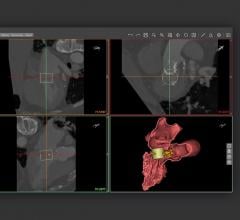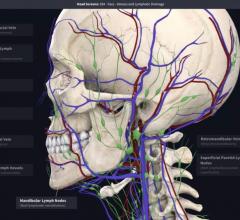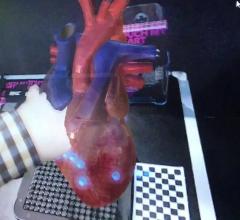
As the volume of cardiovascular imaging procedures continues to grow, cardiology imaging IT is representing the fastest growth area for revenue among both the advanced visualization providers and vendors. The clinical areas that medical imaging providers are capitalizing on are also the main areas served by advanced visualization technology. Therefore, although the market has considerably slowed down in 2008 and 2009, advanced visualization remains top-of-mind among late adopters of the technology, and heavy users of 3-D imaging are currently contemplating the next upgrade to a more efficient platform. It follows that despite the apparent commoditization of 3-D imaging and mounting pricing pressures, the large market potential creates a positive outlook for the next few years as the technology continues to go mainstream. PACS-3-D Integration It is generally agreed that advanced visualization will ultimately become an integral component of the complete workflow system that PACS is continually evolving toward. There is indeed no rationale for handling a 3-D/4-D study any differently than standard studies, especially as the procedure mix evolves in favor of 3-D imaging. In addition, 3-D renderings are utilized in an increasing number of clinical applications and across a widening array of care settings. Today, advanced visualization integration with cardiovascular PACS is taken for granted as a necessity. Every major PACS vendor either has made in-house efforts or OEM partnerships to offer at least basic 3-D functionality (e.g. MIP, MPR) into the PACS. 3-D integrations developed through OEM partnerships are more seamless to the end-user than third-party interfaces. RSNA 2008 showed that every major PACS vendor has further refined their strategy for advanced visualization. The in-house efforts that some vendors have made have paid off as they have built at least basic 3-D functionality (e.g. MIP, MPR) into the PACS, and they already offer it as an optional or as a standard PACS module. Many PACS vendors who have chosen to capitalize on industry partnerships to reach this objective have already closed deals with an OEM to license their 3-D technology and provide it to their customers embedded in PACS and without branding. 3-D integrations developed through OEM partnerships are more seamless to the end-user than third-party interfaces. However, they constitute a rather challenging business model for the advanced visualization vendors capitalizing on the OEM partner channel. Integration Requirements Fueling Industry Ties between PACS and advanced visualization vendors are strengthening. Within the chapter of mergers and acquisitions, Visage Imaging, which operated as a wholly owned subsidiary of Mercury Computer Systems, was spun off as part of Mercury’s effort to refocus its business line on the defense industry. Several parties contemplated acquiring Visage, including a major PACS vendor, until it was acquired by the Australian healthcare IT firm Pro Medicus. Another notable partnership took place with TeraRecon, one of the vendors that has depended least on PACS partnerships to go to market in the past, and McKesson. McKesson, which is one of the most successful PACS vendors currently in North America, is the only major vendor still capitalizing on industry partnerships to fulfill the 3-D integration requirement, and does it solely through a best-of-breed approach with industry partners such as Vital Images and now TeraRecon. Similarly, Ziosoft Inc., an advanced visualization developer, and Healthcare Software Systems Ltd. (HSS), the U.K.’s leading supplier of radiology information systems (RIS), signed an agreement in August 2009 for HSS to distribute Ziosoft’s 3-D thin-client software solutions in the U.K. The Ziostation system integrates with RIS and can process images from reportedly all available PACS. In the fall of 2008, Toshiba purchased Barco’s advanced visualization business to fold into its own 3-D systems development. Vital Images, which realizes almost 40 percent of its revenue through the Toshiba partnership, might not suffer in the short term from Toshiba’s strategic move. The two companies recently signed a five-year renewal of their partnership, suggesting that the Vital Images solution will remain the solution of choice for Toshiba’s customers, at least within the more advanced markets such as North America and Europe. Vital Images owns the advanced clinical applications developed for Toshiba’s Aquilion One 320-slice CT scanner, the company’s top-of-the-line CT system. Today the “all-on-PACS” paradigm is rapidly turning toward one key attribute for advanced visualization: access. It is no longer about the ability to do 3-D but how to do it more efficiently.

 May 12, 2020
May 12, 2020 








